

Our Hunting area consist of 25000 acres. Good number of Kudu and Eland are common in our Northern area. Other species available are Oryx, Zebra, Red Hartebeest, Giraffe, Blue Wildebeest, Black Wildebeest, Blesbuck, Springbuck, Duiker, Warthog, Caracal and Jackal.Several huntable bird species are also available.
We offer professional and trained Guides,Trackers and Skinners to our clients. Our trackers are all Traditional San people from the area. A Bushman(San) tracker will back-up the hunt and will share his vast knowledge of the veldt and animals with you everyday of your hunt. A fair chase hunting experience you will not soon forget.
Predators and scavengers such as Cheetah, Leopard, Jackal and Brown Hyaena are common in the area ensuring a natural wildlife eco-system.
We are fortunate to have access to hunting Buffalo, Elephant, Hippo, Roan, Sable and crocodiles in the Caprivi with experienced big game and dangerous game outfitters in their concessions.
Hunts in the concession are very popular and booked 12-18 months in advance if interested in this you must book in advance.
Fair Chase is defined as the pursuit of a free roaming animal or an enclosed roaming animal possessed of the natural behavioral inclination to escape from a hunter and be fully free to do so.
On all our rifle hunts be prepared to at least walk (slow walk) up to 5km a day. Soil is sandy. We do make provision for hunters not able to do this with blinds and shorter walks into water or salt lick locations. In the rainy season (March/April) hunts could be more challenging.
Rifle hunting
Hunts are conducted on foot or from high seats over water. Animals or fresh tracks are located while cruising with the vehicle and then stalked.
This ensure that you will be stalking or tracking the walking distance will be approx. 3-4 mile a day. All our PH’s and trackers are qualified and will ensure a good hunt and hunting memories.
Rifle requirements:
We recommend each hunter uses a scope sighted rifle he or she feel comfortable and familiar with, anything from 30-06, .375 for a plains game hunt works well and is more than adequate, as with all hunting shot placement and penetration is more important than muzzle velocit
A good quality rifle scope is a must, Leopard are normally shot under low light conditions and require a scope that gathers maximum light. A maximum of 60 rounds of ammunition may be imported for a specific caliber hunting rifle.
Give consideration to using premium grade, medium to heavy, soft-nosed bullets (Swift A-frame, Barnes X).
Rifles / shotguns and ammunition may be hired by prior arrangement from your outfitter. Firearms should be packed unloaded in a secure rifle carry case, ensure your ammunition is packed separate in your checked luggage in a lockable metal container.
We recommend a strong gun case, make sure the case you choose include a strong exterior construction and are fitted with robust locks, internal padding and straps to secure your firearm. The case must be light enough for you to carry or be equipped with wheels. A soft gun case for travel on the back of the hunt vehicle is recommended.
Minimum energy (muzzle velocity) requirements for Rifle hunting in Namibia:
1350 Joule for Springbuck, Duiker etc.
2700 Joule for Kudu, Oryx, Hartebeest, Eland etc.
5400 Joule for Buffalo, Elephant etc.
The following hunt weapons cannot be imported into Namibia:
Handguns : pistols / revolvers
Automatic or semi- automatic firearms or
Cross Bows
Feel free to ask us if you have any questions regarding rifle calibers and ammunition requirements.
The Namibian Authority does not place any restrictions on the temporary importation of hunting rifles, shotguns or compound bows. All hunters entering Namibia with firearms must complete a temporary import permit for all rifles and ammunition in their possession to be used on the hunt and safari.
A typical hunting day:
Upon your arrival before any hunting is done rifles will be sighted on the shooting range.
Around the campfire at night the strategies of the following days hunt will be discussed over some good cuisine and refreshments.
Your day start with rising at 05h30 and having breakfast in the Lapa.
The vehicle with your PH and tracker will then take you out to the designated area that will take 30-45 minutes.
Animals will be spotted or fresh tracks examined at waterholes and saltlicks where after a strategy will be decided upon and then the hunt is on.
Your Ph will have hunting sticks available for stability and you will take your shot of them.
After the shot the animal will be approached and ensured that it is dead.
The trophy will now be set up for your photos while the recovery vehicle are contacted by radio for the pick up.
At camp the slaughtering and trophy instructions as per your instructions will be given to the skinners.
All your skins and trophies will be tagged with your relevant identification details.
Take note that all will be done to ensure that a good representative adult trophy are taken within the Namibian minimum trophy standards, record trophies are available but cannot be guaranteed. We hunt from March – September. Best time for hunting May -August.
An average of 4 trophies can be expected on a 7-9 day hunt.
BOWHUNTING
Namibian conditions are ideal for Bowhunting and most bowhunts are conducted from hides. We have 4 hides over water and saltlicks on various locations on the farm.
Best time for bowhunting is late season from July-September.
An average of 4 trophies can be expected on a 7-9 day hunt.
Animals available for bowhunting is: Giraffe, Eland, Jackal,Blue Wildebeest,Kudu,Oryx,Warthog,Duiker and Cheetah.
Bow hunting requirements
Your Bowhunting guide is a bowhunter and understands the needs of bow hunters and will accompany you on every hunt.
Minimum Equipment Requirements for Bow Hunting in Namibia.
|
BIG GAME |
MEDIUM GAME |
SMALL GAME |
| Bow Kinetic Energy | Bow Kinetic Energy | Bow Kinetic Energy |
| 65 ft/lbs - 88,13 joules | 40 ft/lbs - 54,24 joules | 25 ft/lbs - 33,9 joules |
| Arrow weights | Arrow weight | Arrow weight |
| 450 grains - 29,16 grams | 400 grains - 25,92 grams | 350 grains - 22,68 grams |
Hides
Permanent constructed hides at water and salt licks provide excellent means for the majority of successful bowhunts. All the hides are situated for shots ranging from 15-20 yards.
Walk & Stalk
For the more experienced bow hunters we do walk and stalk hunts.
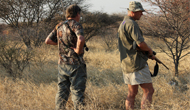
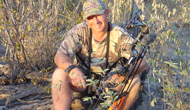
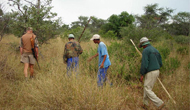
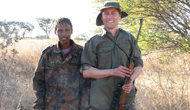
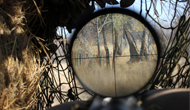
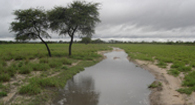
© Eldoret Hunting Namibia 2022. Africa Tourism. Another website by Web Design Namibia